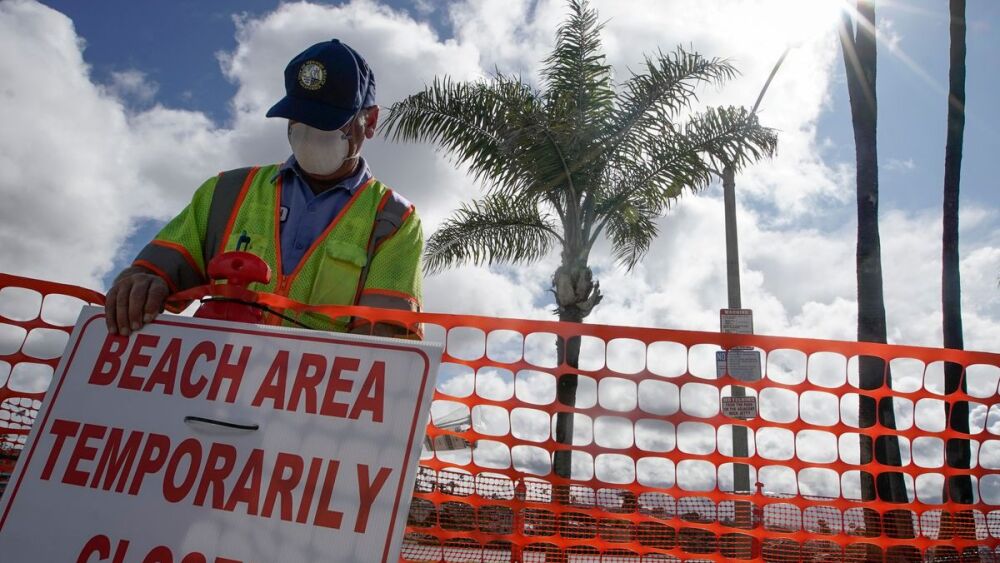As much of the nation remains hunkered down to stop the spread of COVID-19, many Americans are anxious and confused. With the number of those infected, hospitalized and dying mounting, feelings of uncertainty are growing.
Communications from police, fire and EMS departments can be a source of reassurance during this perilous time. Many departments continue to use their Facebook and Twitter feeds to share information for routine incidents, like fires, crimes and lost dogs. While that may be a staple during ordinary times, these are, of course, not ordinary times.
Following are some suggestions on how agencies can use social media channels to spread awareness, create community and provide factual, reassuring information.
1. Share dos and don’ts
Social distancing is the phrase of the year. Staying away from other people, even when you are out for a jog or walking the dog, is important to stop the spread of the virus. Recently, a police officer I talked to in Washington, D.C., expressed her disgust at the crowds who were taking in the cherry blossoms on a sunny March day. Didn’t they know what was going on? Likewise, walking paths and parks in some areas have been much more crowded than usual as people look for any excuse to get out of the house.
All this is understandable – and getting outside can be good for physical and mental health. Share the dos and don’ts with your community and remind them about the 6 feet of separation. Show them what that looks like, and even provide some photos from your community of what it doesn’t look like. You can even get “cute” with it – I saw one department post a photo of police cruisers “social distancing” in the parking lot as the two drivers chatted – at a proper distance of course! The point: Enlist people to make the sacrifices necessary to get this virus under control.
2. Keep up the handwashing talk
Your mother was right. Proper handwashing is crucial. The CDC is encouraging people to wash their hands frequently for 20 seconds. That’s a long time – a lot longer than people think. And while you might think everyone’s heard the message and we don’t need to keep repeating it, that’s just when complacency can creep back in.
Find ways to keep spreading the handwashing message. Take a cellphone video of officers or firefighters in your department following proper handwashing protocol and demonstrate just how long that 20 seconds can be. It’s a great way to share information while also putting a face to the men and women who are out in the community keeping us safe. You could also create a contest around people’s submissions for songs that work as an alternative to the “Happy Birthday” song to help hand washers measure their washing time.
3. Demystify lockdown orders
Your department is an important source of information about the various orders being imposed. What does it mean to have nonessential businesses shut down, to have a stay-at-home order and to have travel advisories to different U.S. destinations? Are inmates being released early from jail? Will EMS still come when I call? Will the police be stopping motorists coming into town? Ticketing those out for a bike ride?
These may seem like silly questions but many in your community just don’t know. They’ve never lived through this before and for some, this is causing real panic. Also spread helpful information about interim policy changes, such as whether street parking rules are still being enforced, whether vehicle licenses will be extended, etc.
Anything you can do to be a reassuring voice to explain the situation will help ease community concerns as well as encourage people to make the good decisions we need them to make to flatten the curve. Share links to authoritative sources for more information. Your state department of health and the CDC provide great information.
4. Showcase your personnel
This is one of those moments where people are seeing just how important the role of first responders is, and just how selfless those who get into this work tend to be. Use your social channels to talk face-to-face – albeit remotely – to your community. Take cellphone videos of officers or firefighters talking about what they are doing to keep the community safe, as well as the steps they are taking to keep their loved ones safe. If your personnel are helping deliver food to the elderly or looking in on those who are alone and infirm, be sure to share those stories.
If you’re wearing protective gear when you respond to calls, talk about and demonstrate the PPE, so people know what to expect. Explaining that your EMT/paramedics may maintain a safe distance to preserve PPE and minimize risk can prevent a negative reaction in patients who feel shunned. Think of it as community outreach, but online.
5. Connect with kids
Kids are at home, often bored and unable to have playdates with friends. If you are in a community not yet heavily impacted by the virus and you have the time, use your channels to conduct virtual sessions to answer kids’ questions about your line of work and what kind of career preparation goes into it. If you’re ambitious, hold reading sessions, where department personnel read books aloud to kids. Let your local news organizations know you are doing this. It will help spread the word and provide great media and public relations for your department.
6. Encourage action
In a time of crisis, people want to help. What can your community members do to help their communities? Encourage them to donate blood, help their neighbors, donate to food pantries. Doing something helps people feel more in control.














